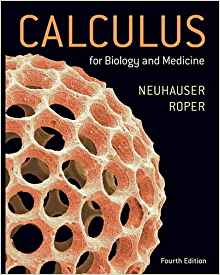The official textbook for this course is Calculus for Biology and Medicine (4th edition), by C. Neuhauser and M. Roper. The book is published by Prentice Hall. It is very readable and has many worked out
examples. The book can be purchased from the UK Bookstore or online.
Roughly speaking, we should cover chapters 6 through 11 of this book. We will learn about methods for evaluating integrals, differential equations and the first elements of calculus in several dimensions. Differential equations serve to model quantities which change over time such as biological populations. The computational techniques for integrals are needed to be able to find exact solutions to these equations. Calculus in several dimensions is useful for understanding quantities which vary with respect to position and time. Examples that will illustrate these mathematical techniques include systems of differential equations which model two species interacting in nature.
